Oshkosh – Landing on the Dot
Story and pics – Laura McDermid
I was lucky enough to make the pilgrimage to Oshkosh again this year, flying the flag for SA Flyer.
Whenever I tell people I’m off to the States, they ask the same thing: So, where are you going? My answer is always the same: Oshkosh. Cue blank stares. Why, they wonder, would anyone travel 14,000 km to visit one place in America?
It’s a fair question — and one only fellow aviators truly understand. Oshkosh isn’t just an event; it’s an institution. It’s the kind of place pilots dream about, where you’re woken by the growl of a radial engine instead of an alarm clock, and the smell of avgas is an intoxicating elixir.
The only real clue that we’re in the USA is the accent — the same one we grew up hearing on SABC in the Dallas and A-Team era — and the fact that a mediocre burger costs the same as a Woolies trolley dash.
The beauty of Oshkosh is that it rips you out of your daily humdrum on the southern tip of Africa and drops you into a world that revolves around aviation 24/7.
This year, Neil Bowden and his team gave the infamous Fuel Pit a facelift. For the uninitiated, this is the bar that has been the undoing of many fine upstanding folk. It’s where Spotted Cow Lager, Doomsday Ale, and the downright dangerous Candy Floss Moonshine flow freely.
Kamp Plakkerfontein hosted 200 of us this year, offering ice-cold drinks, tasty food, and featuring the infamous Fire Pool — our salvation from the relentless heat.
The usual suspects were there too. Sling Island buzzed with activity despite tariff headwinds. Their big win this year came courtesy of the FAA’s new MOSAIC rule, which allows manufacturers to sell complete, ready-to-fly aircraft in the US built to ASTM (American Society for Testing and Materials) standards — no full FAA certification needed. This opens the door for larger, faster, more capable LSAs and expands pilot privileges.
Stefan Coetzee was meant to show off three KFA aircraft in the Ultralight Fun Fly Zone. Sadly, a truck mishap on the way to Oshkosh’s Wittman Regional Airport left two damaged. Only one Safari survived, but it flew the flag proudly.
South Africans didn’t just show up — we conquered. For the first time ever, we knocked Australia off the top spot for most-represented international country at AirVenture. A total of 287 Saffers signed in at the International Tent — three more than the Aussies. And as we learned in the 2023 Rugby World Cup final against New Zealand, one point is still a win.
Our flag will now take prime position on the Brown Arch for the first time in history — a proud moment for EAA 322.
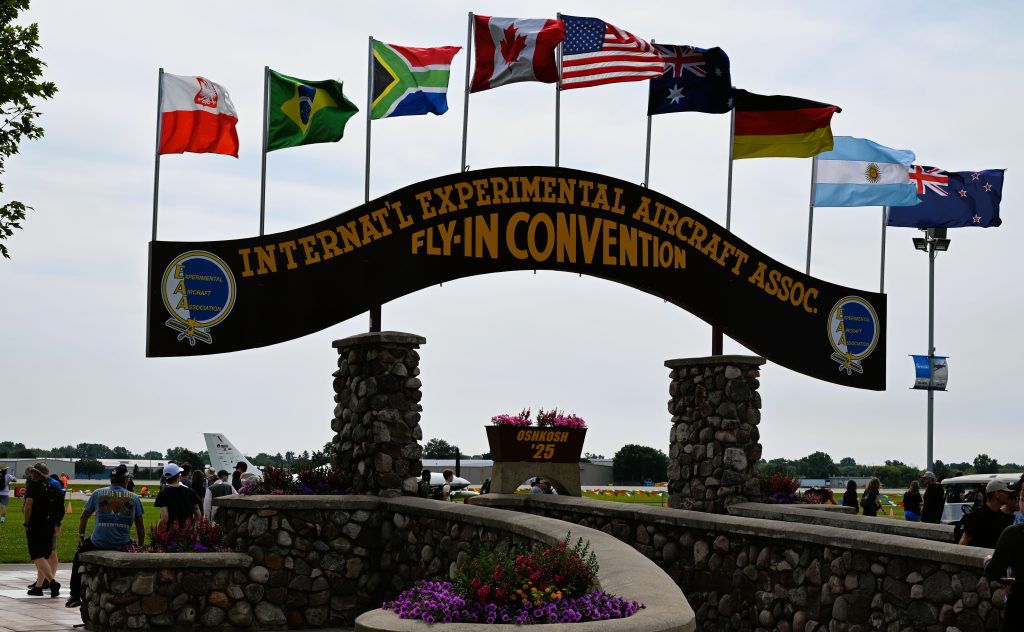
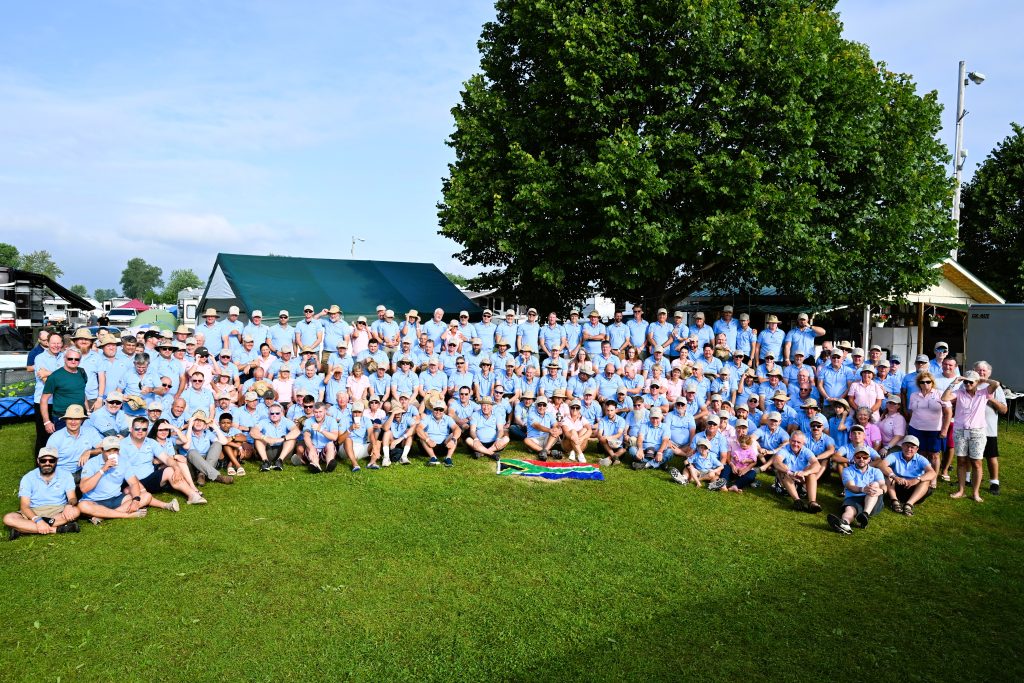
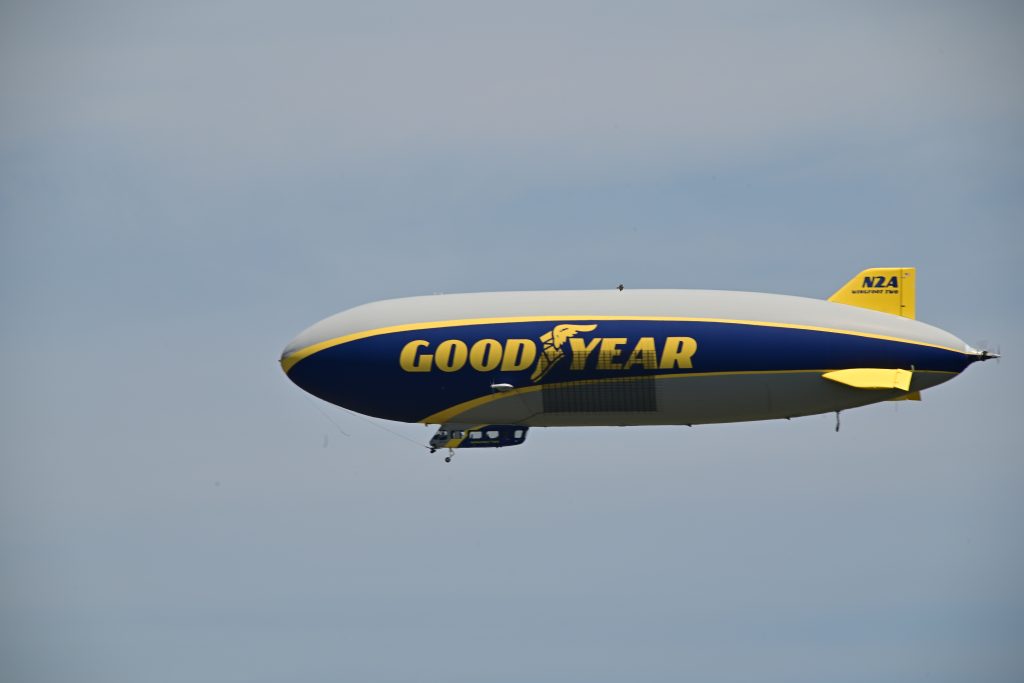
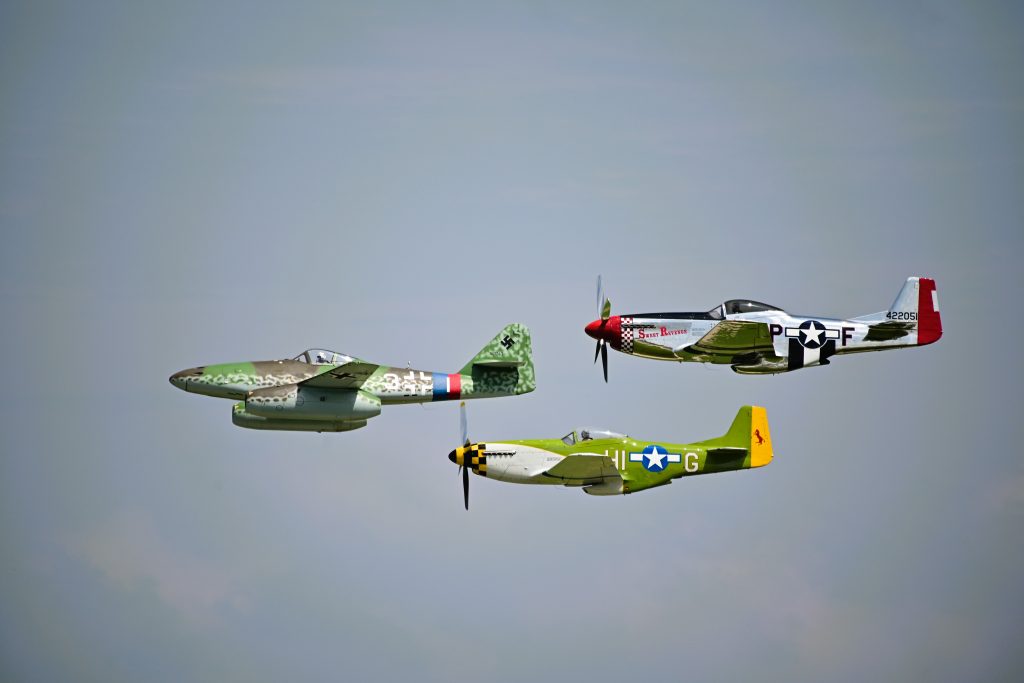
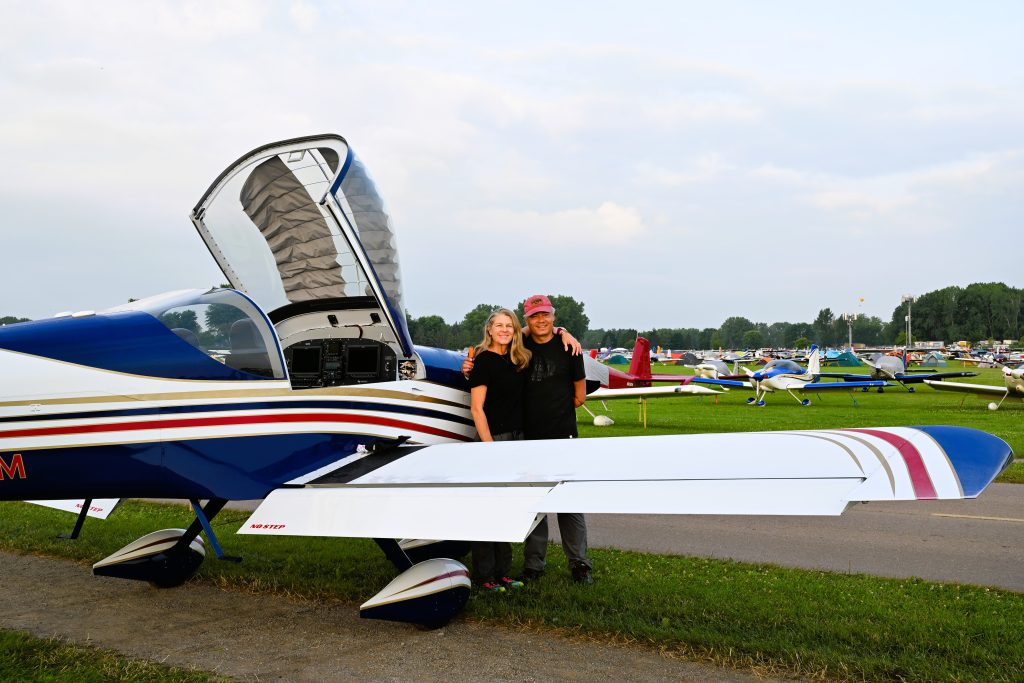
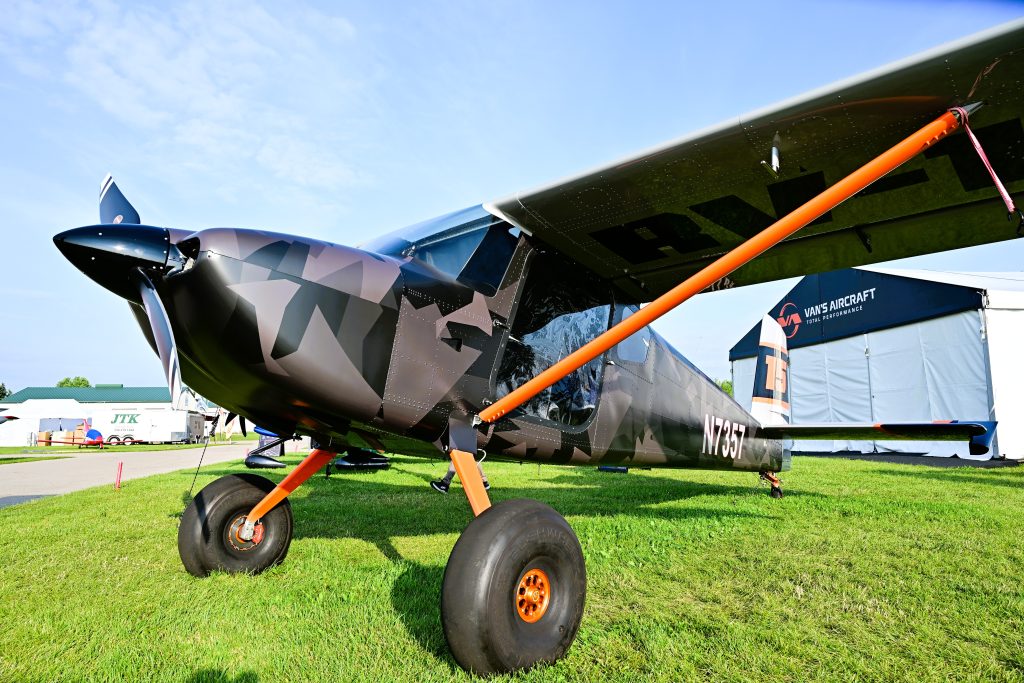
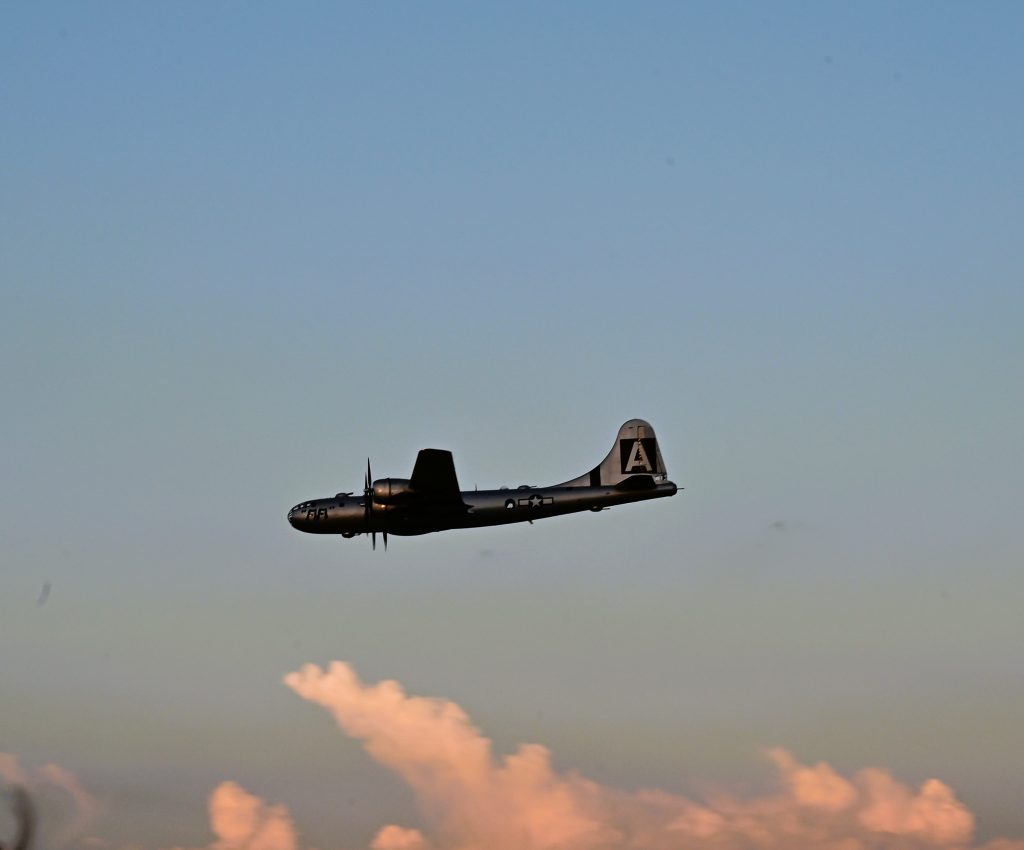
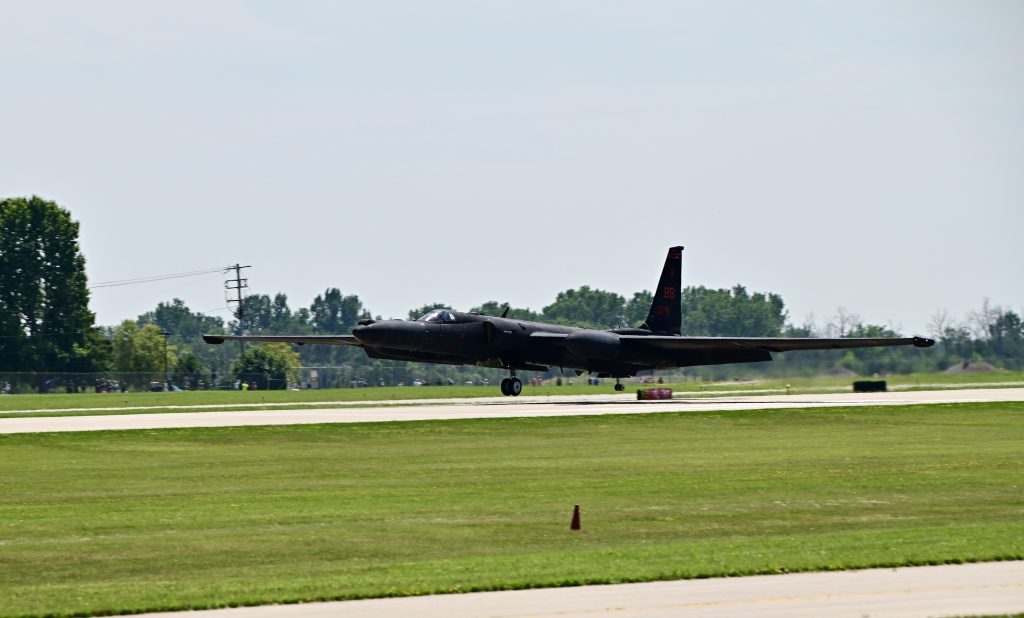
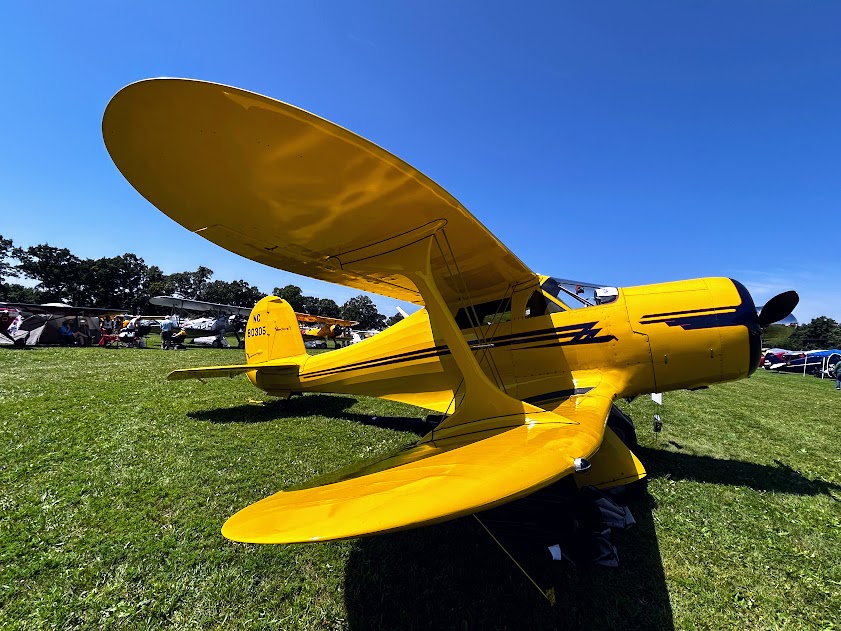
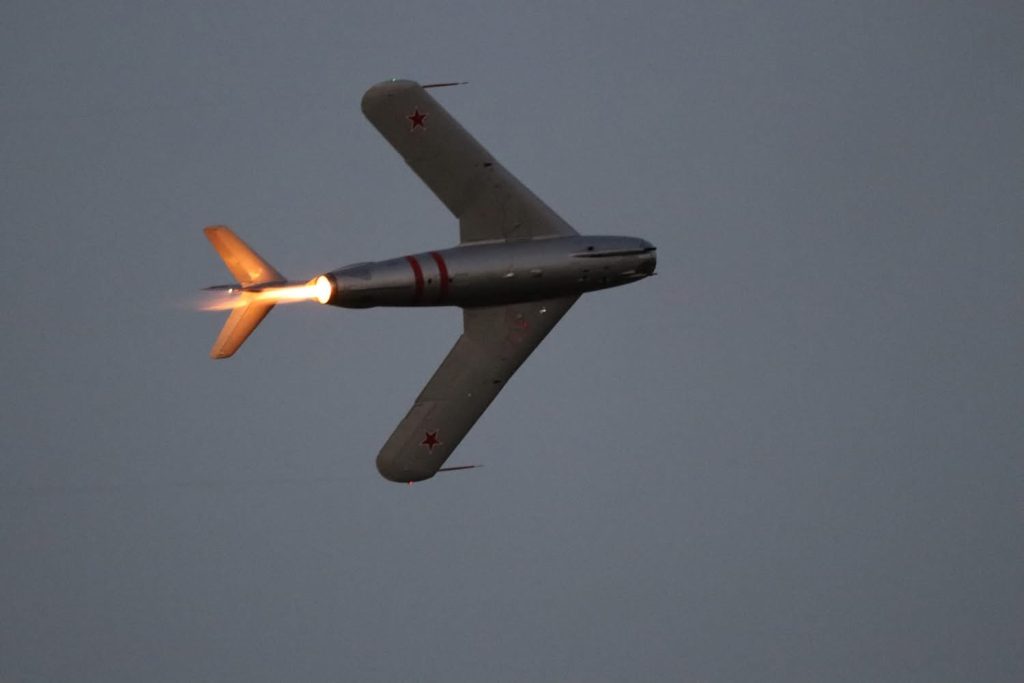
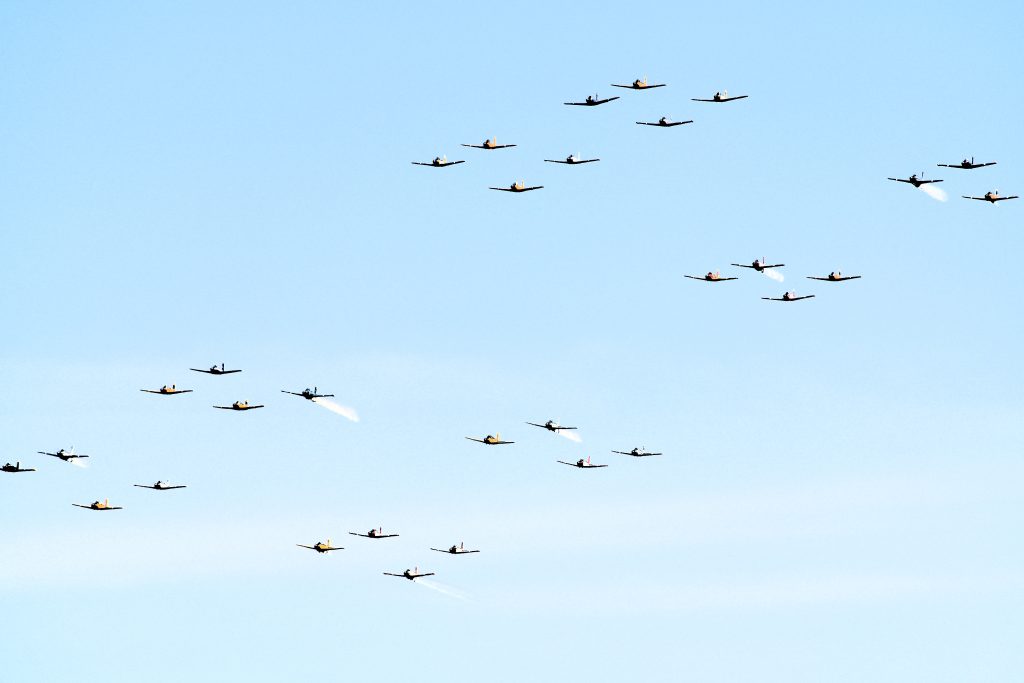
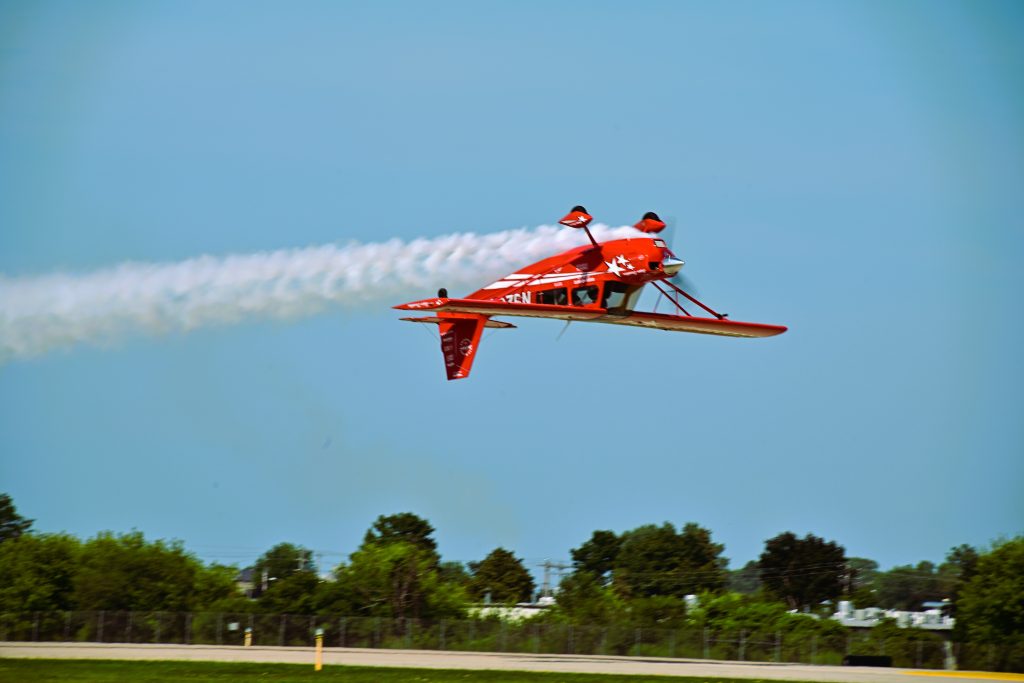
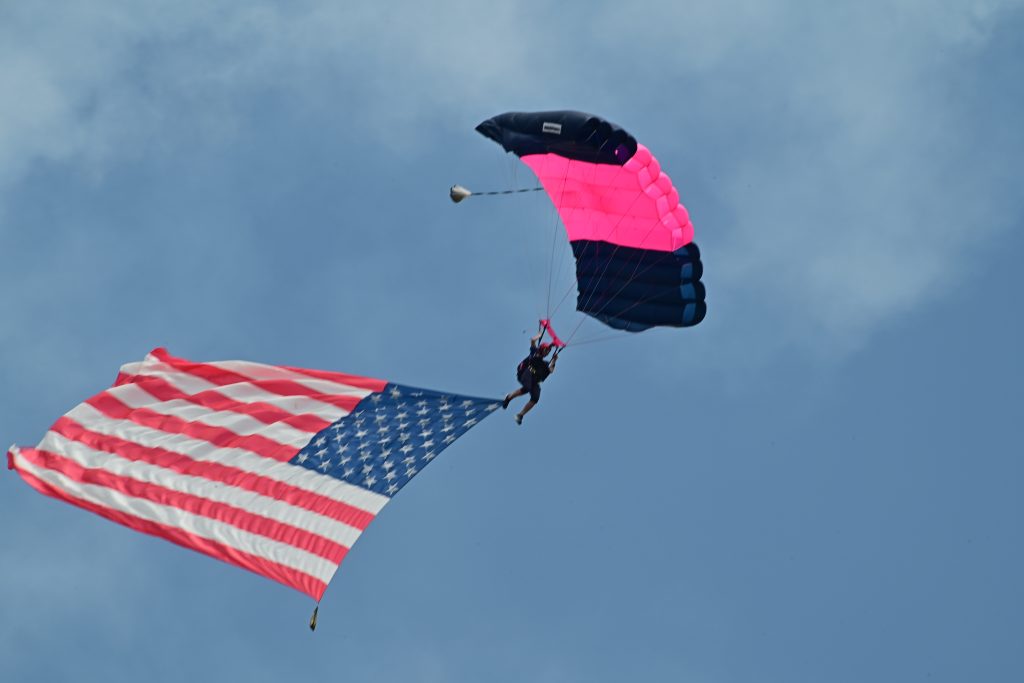
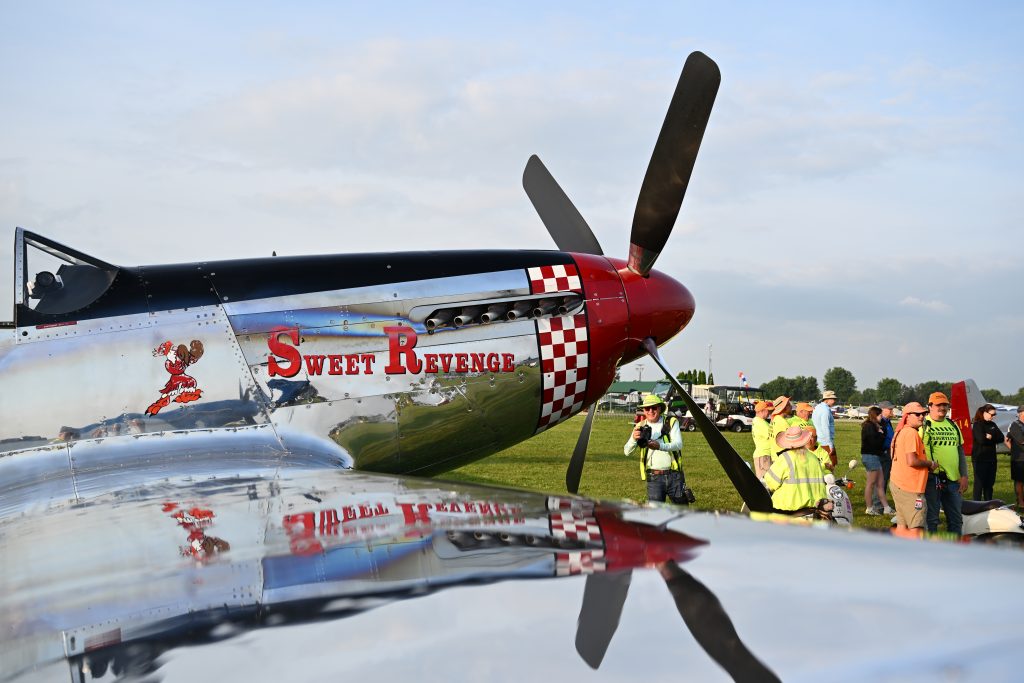
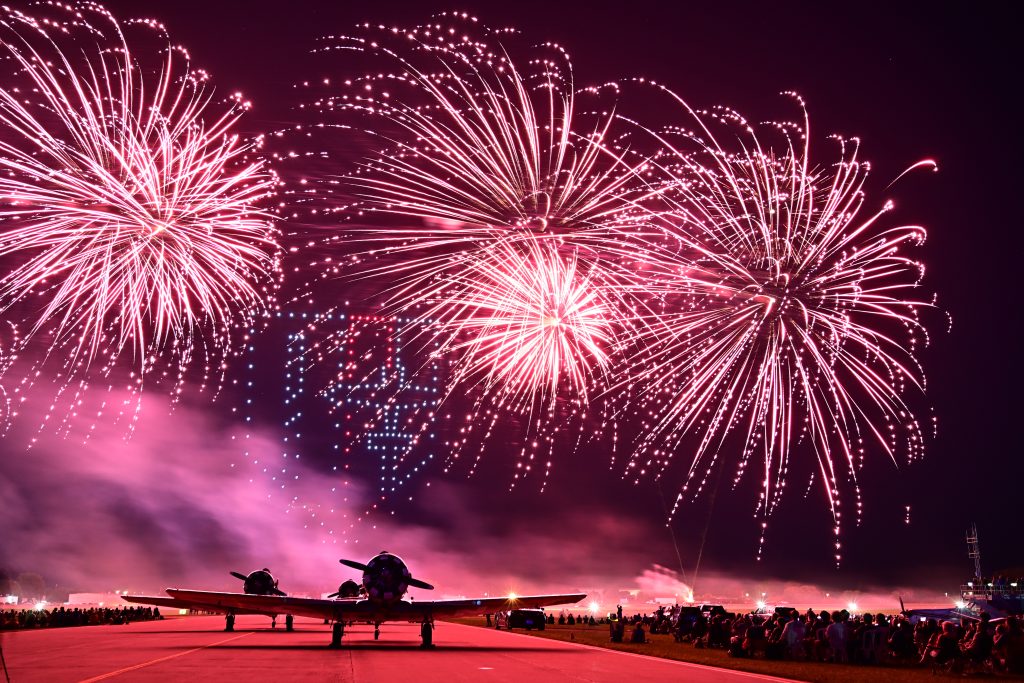
Airshow highlights? Seeing an Me 262 — the first operational jet fighter — chased down by two P-51 Mustangs. With its revolutionary jet propulsion, the Me 262 outpaced the Mustang by 104 knots, an extraordinary feat considering its design was conceived way back in 1939.
And then there was the F-35B’s Saturday night party trick. Short take-off, vertical landing, hover like a UFO… If the Roswell crowd ever needed proof that aliens exist, this would be it. The thing just appears and hangs there — like it’s judging you for eating that extra helping of ‘slap’ chips.
But my personal cherry on the top? Flying the legendary FISK approach in a kit-built RV-14A N585TM, owned by Jim Montague.
For a pilot, especially one from a different continent, that’s bucket-list stuff. The kind of experience that makes you forget the jet lag, the heat, and even the small fortune you just spent on aircraft spares.
Craig Ritson had generously offered me the chance to take the controls, but with only an RV-7A on my licence — and knowing full well that climbing into an unfamiliar aircraft under the pressure of an Oshkosh departure was a recipe for disaster — I declined. Besides, this wasn’t Craig’s first rodeo, and my trust in his skill was absolute.
The morning dawned crisp and clear, the air still, as we walked to the warbirds section where the RV-14 sat tethered. Pre-flight complete, we found a willing marshal to halt the traffic so we could taxi out. We paused at the intersection to the warbirds apron, waiting for thirty North American P-51 Mustangs to return from their early-morning passenger flights. I slipped off my headset to fully savour the rising chorus of Merlin engines as they rumbled past.
Normally, holding short when you’re eager to get airborne is frustrating — but a fleet of Mustangs parading past is a rare privilege, and I was more than happy to enjoy the spectacle.
ATC routed us to Runway 9, giving me a rare view of AirVenture from “backstage”. I started filming as we began the taxi; the line of parked aircraft seemed endless, wingtips stretching into the horizon. It took two minutes just to roll past them all. Only from this vantage point can you truly grasp the sheer scale of Oshkosh.
When we reached the end, ATC redirected us to Runway 36 — another slow parade of flying machines, each with its own story.
Unruffled as ever, Craig lined up and awaited clearance. Moments later, we were airborne. I watched the land recede, Oshkosh sprawling beneath us in all its splendour. We tracked parallel to Fond du Lac, the alternative airfield some 14NM south of Wittman, before Craig banked left towards the seaplane base — a sight far more impressive from the air than it could ever be from the ground.
Craig handed me the stick and I flew the RV-14 — a bigger, beefier sibling to the RV-7. Then, with practised ease, he took over for a few perfectly executed rolls and loops — his favourite part of flying. All the while, ATC choreographed the constant stream of arrivals and departures, keeping chatter to a minimum unless absolutely necessary.
Approaching FISK, ATNS had already identified us and asked us to rock our wings in acknowledgement.
“RV-14, that was a great rock! Would you prefer to land on Runway 27 or 18?” Craig chose 18, and we continued in, ATNS giving us precise positional calls.
Cleared to land on the pink dot, Craig made a sharp turn onto base and then onto final approach. It all happened so quickly that by the time I’d found my bearings, he was already aiming for his short-field mark — executing a perfect spot landing . Even with multiple approaches behind him, Craig admitted afterwards that he’d been a little nervous — this was his first landing on Runway 18
The ground crew waved us through with broad smiles, giving thumbs-up as we passed. What struck me was the generosity of spirit — ATNS, marshals, fellow pilots — all radiating calm and encouragement despite managing hundreds of aircraft each day. It’s this quiet competence and good humour that inspires confidence — and keeps Oshkosh’s incident rates enviably low.
At our parking bay, visitors closed in almost instantly, drawn by the RV-14’s beauty and the morning’s energy. They helped us push her back into position. Whilst I wrestled with a particularly stubborn rope, Craig had already tied down the right wing one-handed and without fuss.
There are moments that stop you short, that humble you and quietly reset your perspective. That morning was one of mine. What I learned from flying with Craig is not merely that a person can master an aeroplane with one arm — but that it’s attitude, far more than anatomy, that determines your altitude.
Oshkosh 2025 did not disappoint. There were less fighter jets than the previous year and a few less warbirds on display but that didn’t dampen the enjoyment or for that matter the attendance which topped the previous year by 20,000 attendees.
Considering the uncertainty of South Africa’s current aviation climate, it was refreshing to see the progressive initiatives being rolled out by the FAA and their unwavering commitment to the support and growth of general aviation.
One can only hope that our local authorities take heed.
Annual fly-in/airshow total attendance 704,000, topping the 686,000 mark set in 2024.
Aircraft operations: 16,246 from 17-28 July
Show planes: There were 2,543, breaking down to 995 vintage aircraft, 910 homebuilt aircraft, 361 warbirds, 101 ultralights and light planes, 75 aerobatic aircraft, 74 seaplanes and amphibians, 18 rotorcraft, and nine balloons.
Campground users: 40,000 visitors made use of 15,000 campsites in aircraft and drive-in camping
Volunteers: Nearly 6,000 contributed nearly 300,000 hours.
Commercial exhibitors: A record-setting 962 showed up this year.
Forums, workshops, and presentations: There was a lot to choose from, as there were more than 1,600 sessions hosted during the week at 65 venues.
International guests: AirVenture boasts worldwide appeal. A total of 2,305 attendees from 94 countries outside the U.S.
Local economic impact: The EAA estimates the event brought in $257 million for the five counties in the Oshkosh region (Winnebago, Outagamie, Fond du Lac, Calumet, and Brown). That figure is based on a recent University of Wisconsin-Oshkosh economic impact study for the 2024 event.
